Coffee cup test | Coffee beans are graded by scientific principles
For professional baristas, please follow the coffee workshop (Wechat official account cafe_style)
Cup test
Coffee Cupping/Coffee Tasting
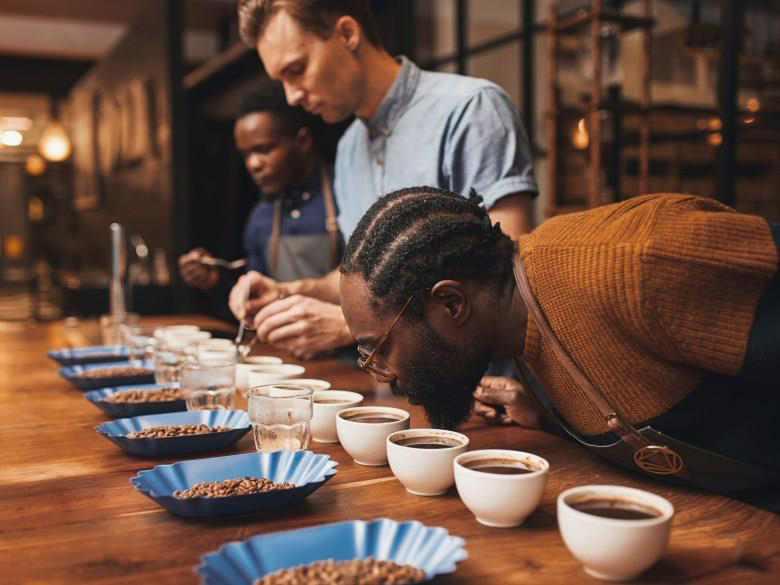
Before raw coffee beans are sent to all parts of the world, cup tests will be carried out by coffee farmers' associations or refining factories in the producing areas, that is, to try to confirm the aroma and taste of beans, to judge the flavor and taste of coffee, and to identify the quality of a type of coffee. it's a very scientific method.
Before the raw coffee beans are sent to all parts of the world, they will be tested by the coffee farmers' association or the refining factory of the producing area, that is, they will try to confirm the aroma and taste of the beans, classify them again, and ship the goods only after the cup test is completed.
The purpose of cup test
1. Through scientific methods to identify the quality of coffee.
(2) for beans with the same origin and different baking methods, judge which baking method and baking grade is the best.
3. Beans with different producing areas, the same baking methods and grades, judge which producing area is the best.
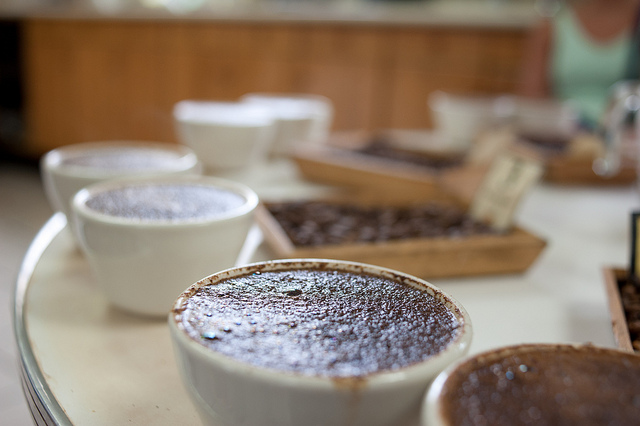
What do you need for a cup test?
1.4 five kinds of raw and cooked beans
two。 Bean grinder
3. Dish
4. Glass
5. Spoon
6. Empty bowl
7. Scale
8. Electric kettle
9. water
10. Cup meter
11. Cup tester
Cup test step
1. First put the plate containing 4 kinds of raw beans and cooked beans on the table, 4 kinds of raw beans and 4 kinds of cooked beans. There are glasses, spoons and empty bowls next to the plates of each kind of raw and cooked beans.
two。 Pick up the dishes containing raw beans and cooked beans respectively, smell the taste, judge the flavor, confirm whether the raw beans are moldy and the aroma of ripe beans, and record the flavor of each kind of beans in the cup meter.
3. Grind different kinds of coffee beans, put 8 grams of coffee powder in a glass, then pour each cup into 120 ml ~ 150 ml, 92 degrees C hot water, wait a moment, wait for coffee powder to precipitate and observe its solubility.
4. Gently stir with a spoon on the thick surface of the coffee, put your nose close to the smell, and then record the flavor in the cup meter.
5. Remove the coffee grounds from the surface with a spoon, then scoop a spoonful of coffee into your mouth. One thing to pay special attention to here is to suck the coffee into your mouth with a whoosh, but don't swallow it, but put the coffee liquid on the front teeth with your tongue to judge its taste. Let the coffee liquid circle in your mouth, chew its taste, and finally spit the coffee liquid in your mouth into an empty bowl to one side.
6. Record the performance and flavor of coffee beans at each stage in the cup meter to complete the cup test.
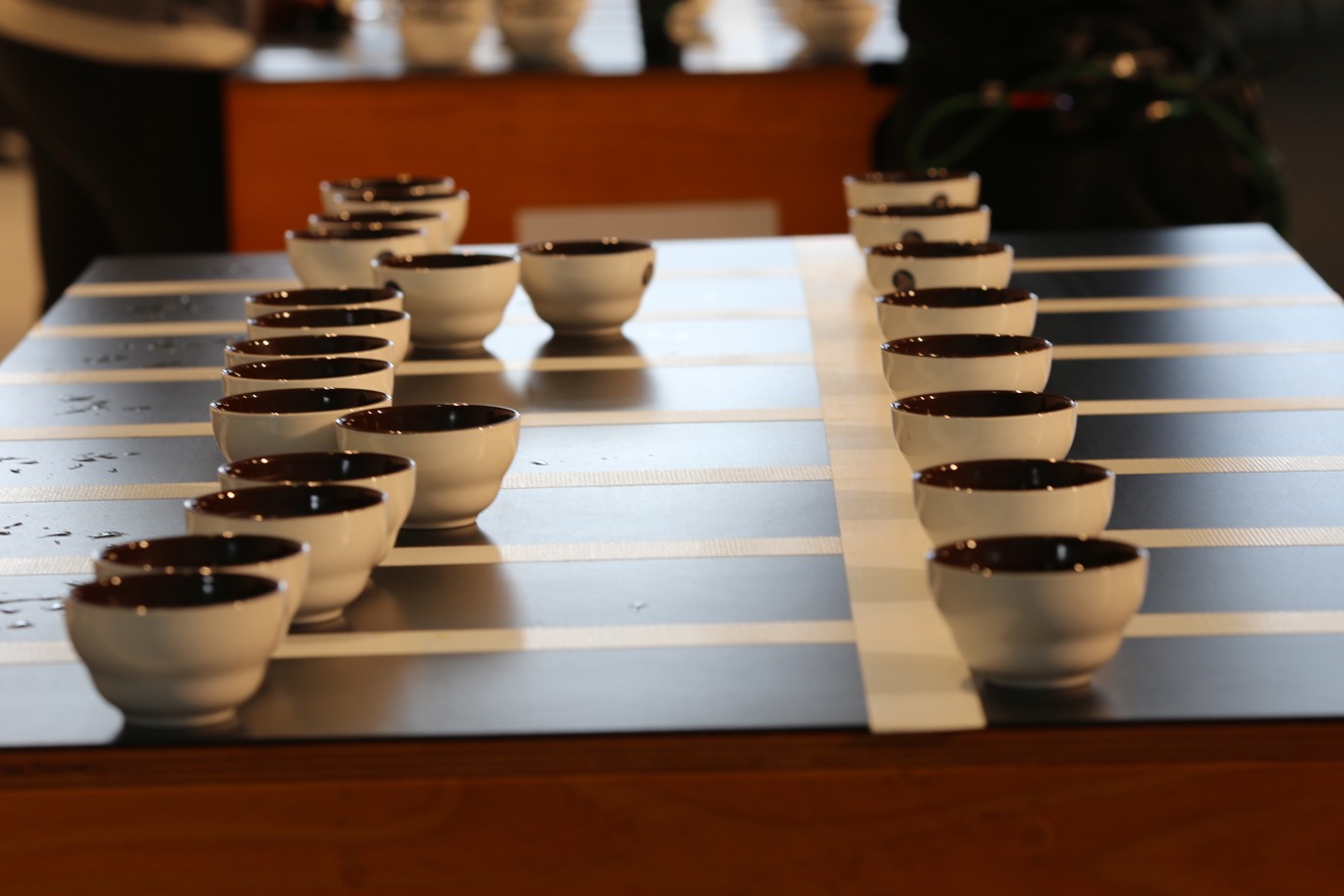
The main contents of the cup meter, as well as the flavor and taste of a type of coffee
1. Fragrance: the aroma of coffee beans.
two。 Aroma: the smell of brewed coffee.
3. Body: the texture of coffee liquid in the mouth.
4. Flavor avor: the taste of coffee when it enters the mouth.
5. Acidity: whether the sour taste of coffee is bright, lively, sharp and dull.
6. Sweetness (sweetness): the sweetness intensity of coffee liquid as it rotates in the mouth.
7. Aftertaste: the flavor and smell left after tasting the coffee liquid in the mouth and spitting it out.
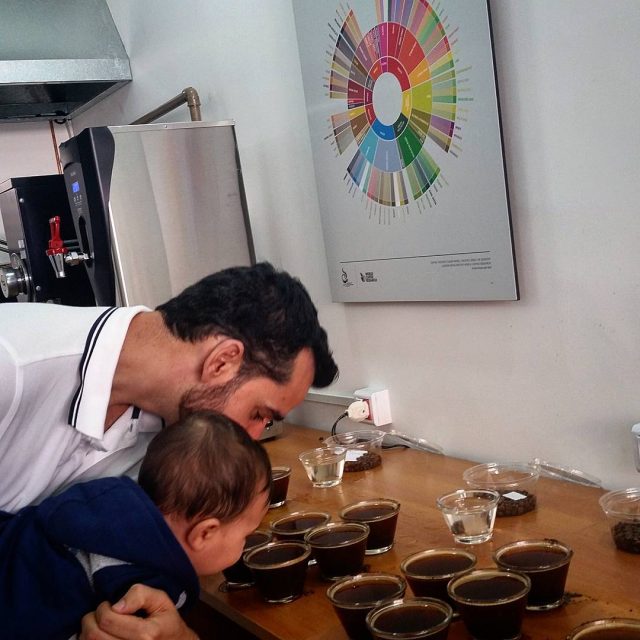
Professional coffee institutions such as the American Fine Coffee Association (SCAA) cup meter is more detailed, in addition to the above, but also to "uniformity", "cleanliness" (cleancup), "taste" (mouthfeel), "overall impression" (overall), "taint" (taint), "defect" (fault) and other items. Therefore, it is a very scientific method to judge the flavor and taste of coffee by cup test, and to identify the quality of a kind of coffee.
Important Notice :
前街咖啡 FrontStreet Coffee has moved to new addredd:
FrontStreet Coffee Address: 315,Donghua East Road,GuangZhou
Tel:020 38364473
- Prev
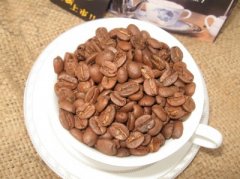
Difference of coffee flavor in different coffee filter cups
Professional barista communication please pay attention to the coffee workshop (Wechat official account cafe_style) ● these are personal subjective consciousness of coffee, affected by brewing methods, water temperature, powder thickness, personal provide conceptual feelings, I am not a professional cup tester, just coffee lovers, please do not take me seriously, thank you have several filter cups, respectively, kono purple sand, kon
- Next
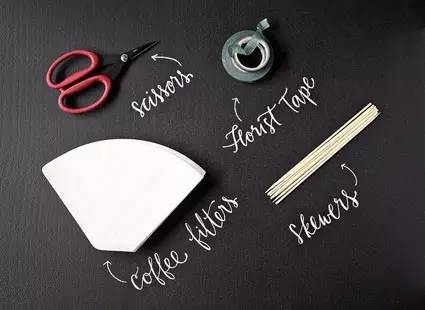
N special uses of coffee filter paper! Mom doesn't have to worry about my filter paper being wasted anymore!
Professional barista communication Please follow the coffee workshop (Wechat official account cafe_style) for a coffee lover, it is normal to have N coffee filter cups at home, sometimes like to use V60, KONO, sometimes obsessed with cake cups, suddenly collect one or two fan-shaped filter cups on a whim; if you lack a vase at home, you may be inexplicably received a Chemex pot.
Related
- Beginners will see the "Coffee pull flower" guide!
- What is the difference between ice blog purified milk and ordinary milk coffee?
- Why is the Philippines the largest producer of crops in Liberia?
- For coffee extraction, should the fine powder be retained?
- How does extracted espresso fill pressed powder? How much strength does it take to press the powder?
- How to make jasmine cold extract coffee? Is the jasmine + latte good?
- Will this little toy really make the coffee taste better? How does Lily Drip affect coffee extraction?
- Will the action of slapping the filter cup also affect coffee extraction?
- What's the difference between powder-to-water ratio and powder-to-liquid ratio?
- What is the Ethiopian local species? What does it have to do with Heirloom native species?

